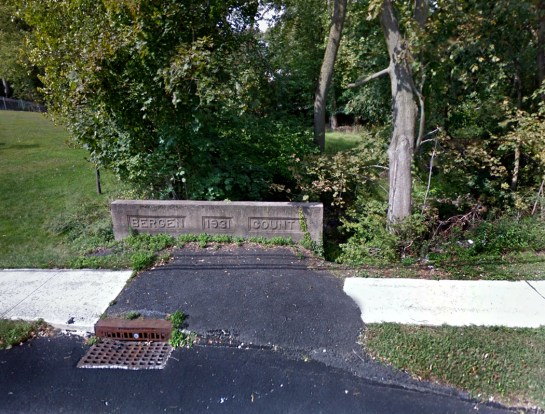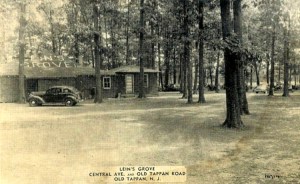Time is fierce
We travel in time as much as in space.
And just as there are moments when you stand on the top of a rise and see grand vistas and the lay of the land suddenly becomes clear, there are moments when you climb up out of the hollow of local time and the years spread out in front of you as one vast temporal landscape.
I had such an experience this summer in New Jersey.
I was born and raised in the Garden State in several communities between the Hackensack and Hudson rivers. I left for college and have rarely been back in the intervening quarter century — family and friends had all died or moved away.
But on this trip my wife and I passed through Bergen County and managed to stop by some places I knew well as a boy.
Now I’m not about to wax nostalgic. I abhor nostalgia; it is a kind of morticians’ wax applied to the dead face of the past, distorting everything we once knew. Times were not better then and never were.
But things clearly have changed.
The first change is purely psychological: Everything has shrunk. The landscape that was so sprawling to my boy’s eyes is now condensed to a few tight city blocks. What seemed like an expedition is now walking distance. Skyscrapers are now bungalows.
Many people have experienced a similar sensation.
But the second change is more profound: The snapshot of New Jersey in my brain has remained static while time has bounded forward, so that when I revisit Teaneck or Old Tappan, I’m seeing what is in effect time-lapse photography: All the changes are accelerated so that what has moved invisibly day to day is now telescoped into a rush.
It isn’t just that there is more development. Bergen County has for a long time been the very model of suburbia; there are tract homes everywhere and more spring up every day. But nature has somehow kept up with the construction: Housing developments that were raw muddy wounds 30 years ago are now green and shaded under sprawling trees. For all the decay of time, there is a matching fecundity.
And when a quarter century exists between frames in your movie, it is a small step to move back yet another quarter century and then another, so that the history you learned in school no longer sits inkbound on the page of a book but begins to breathe as another scene in the movie you are a small part of.
So you can slide the film back and forth in your mental Moviola only a dozen equal frames and you are in the era of Peter Stuyvesant and Dutch colonialization. It’s a blip from now to 1655 on the time line.
 The Old Tappan I grew up in was dotted with farms and old stone houses, built during the Dutch era. The houses are thick-walled and covered in lichen, moss and ivy; they are overarched by spreading oaks. They have, as it is said, settled.
The Old Tappan I grew up in was dotted with farms and old stone houses, built during the Dutch era. The houses are thick-walled and covered in lichen, moss and ivy; they are overarched by spreading oaks. They have, as it is said, settled.
Such houses were constructed of brown sandstone quarried by slaves.
It isn’t often remembered that slaves are a part of New Jersey’s history: In pre-Revolutionary times a settler was given 175 acres of land for every slave he imported. By 1737, slaves accounted for 8.4 percent of Jersey’s population.
Slave insurrections — in Hackensack, Raritan and Elizabeth, among other places — were a continual occurrence and citizens felt themselves stuck with the damnable institution. In 1772, a law was proposed ”obliging owners of the slaves to send them all back to Africa at their own expense.”
The law came to naught, but by that time free labor began to replace slavery and indenture.
I mention all this because when my boyhood home was built in 1956 in Old Tappan in northern New Jersey, the excavation turned up the stone foundation of slave quarters. It had been buried in woods for centuries and was now opened up to the sun for the first time.
It seemed little more than a curiosity then, and it was soon buried once more under the landscaping in our back yard. Its reawakening was brief.
 The house has had two or three owners since I lived in it. I doubt that any of them knew what was buried under the Zoysia grass. But I thought of it again as I visited on vacation and saw how much the old house had changed: new paint, grown-up trees that were once bushes, a new bridge over the creek that cut through the property.
The house has had two or three owners since I lived in it. I doubt that any of them knew what was buried under the Zoysia grass. But I thought of it again as I visited on vacation and saw how much the old house had changed: new paint, grown-up trees that were once bushes, a new bridge over the creek that cut through the property.
You play the film through the Moviola: The whole of northern New Jersey was once covered by a forest of oak and hickory. That was cut down for agriculture; the slave quarters behind my childhood home was evidence of that. But the fields grew once more into trees and were once more cut down to build the house.
The field next to the house was still pastureland when I was a boy. Now, it is dense with willows, birch and maple, on its way once more to growing oaks. If I look into its future, I can see more housing.
Time is fierce; it consumes the world.

I grew up on the east end of Old Tappan, on the first street in Northvale. I loved this post because it gave word to the feelings I had when I briefly went back in 2005/6. In particular, the concept of distance…what seemed like a day’s hike is now a short walk. Of course, my legs were shorter 55 years ago and that may have something to do with it. I also think that kids today no longer have the freedom that we did. They all seem overscheduled and over-supervised. I can remember entire summers with no adult contacts except at mealtimes. Thanks again for your insights.
Richard, did you live on Westwood Avenue? If you did, I lived almost direct opposite you. Great article! it’s such a strange feeling to go back.
Rich, I’m amused you chose a photo of the home I grew up in (Frederick Haring house). Any reason you chose that one, or was it just at your fingertips? Curious, too, about the slave quarters unearthed when your home was built. Who identified it as such, and what other structure was there on that site?
Richard: Enjoyed your article. I was in the same class as your brother Jack, he sat behind me in first grade. I have our first grade class picture from Charles DeWolf. I’ll send you a copy if you would like. Great website you have. Tom Auth
Rich: An eloquent article, especially for ex-Old Tappaners. I remember your family well and your reference to the “snapshot in our brains” is so true.